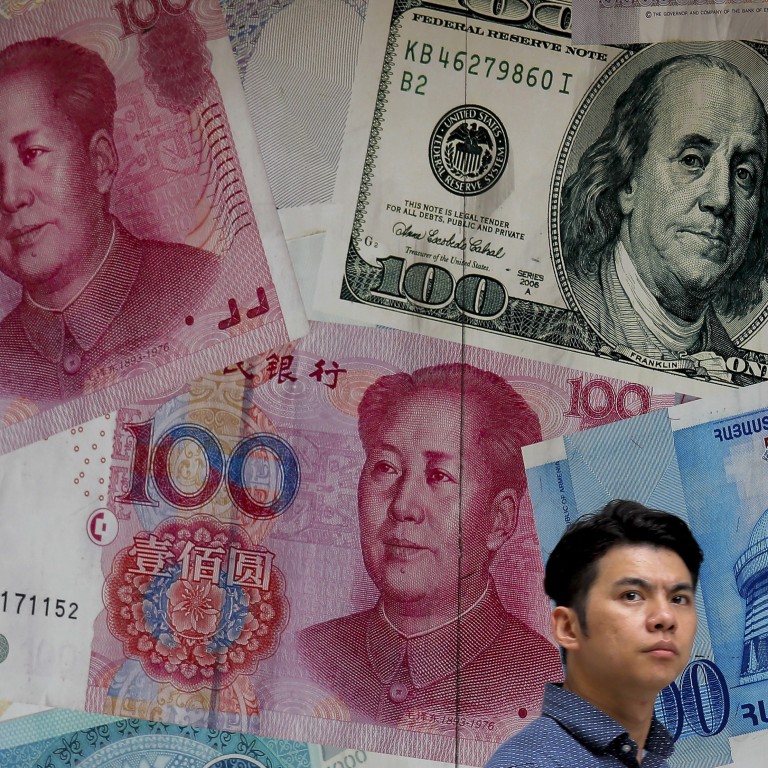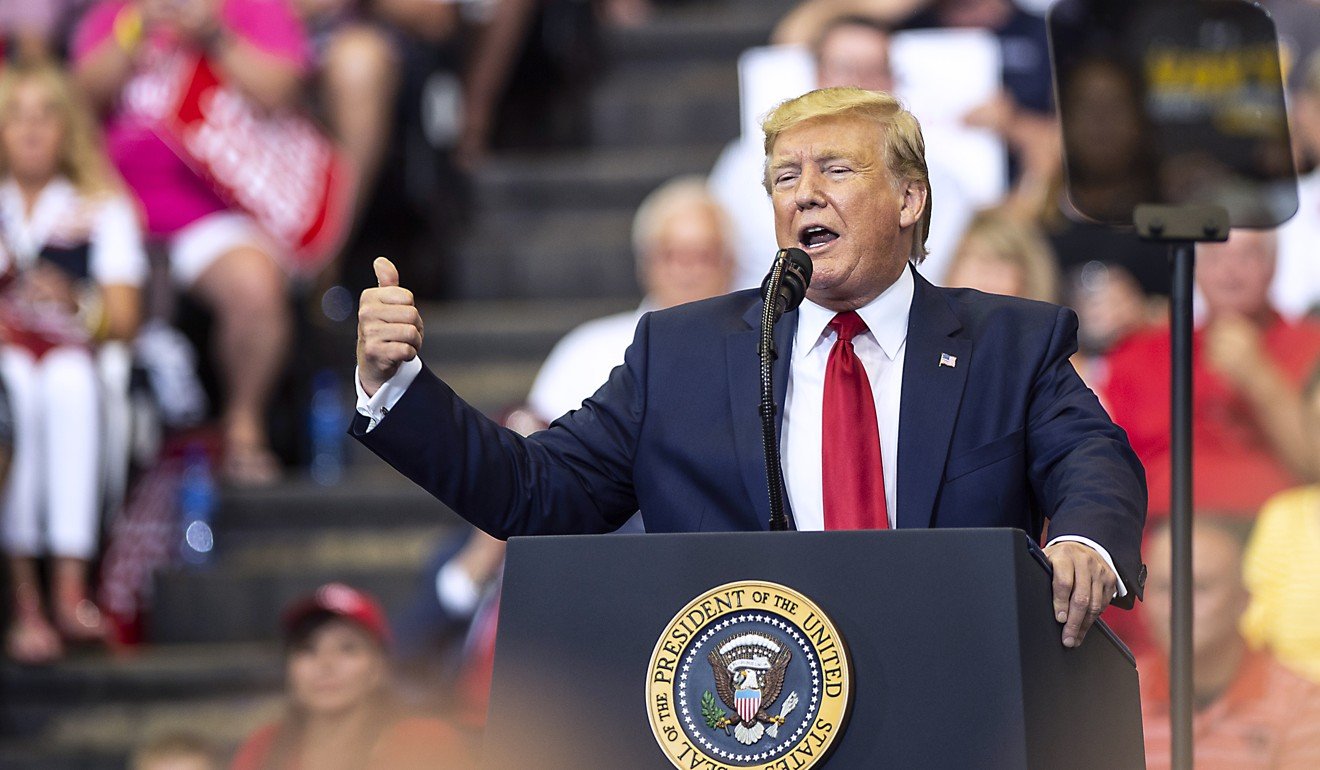
The real danger behind US currency manipulation charges against China
- Washington’s decision to slap the label on Beijing opens a new front in the simmering US-China cold war
- In the long term, this is likely to accelerate the uncoupling between the world’s two largest economies, writes Tom Holland
The Chinese government doesn’t generally get – or deserve – much sympathy, but you almost have to feel for Beijing on this one.
In truth, the currency manipulator label doesn’t actually mean that much. In theory, its award starts a process lasting six months to a year that may result in Washington imposing some token sanctions that would be irrelevant in the case of China anyway.
China thinks it can weather trade storm. It can, but not for long
In the long run, that could prove even more divisive, and have far greater consequences for smaller countries forced to choose sides between the two economic heavyweights.
For the time being, though, an interlude of phoney war looks likely. In material terms, the US-China conflict is unlikely to worsen significantly over the coming months. But neither will it get any better. And that alone will act as a drag on the economy of much of the rest of the world.
The latest round of the bilateral spat kicked off on August 1 when Trump, irate at the lack of progress at trade talks in Shanghai, overruled his advisers and took to Twitter to pledge additional tariffs on imports from China. From September 1, tweeted the president, Washington would levy a 10 per cent tariff on US$300 billion of thus-far-untouched imports.
The following Monday, the Chinese authorities allowed the yuan’s exchange rate to weaken through the psychologically significant 7 yuan to the dollar level for the first time in a decade. Hours later, the US Treasury declared China guilty of currency manipulation, something it had held back from doing for over 15 years.
In practical terms, this latest series of measures and countermeasures consists largely of political posturing.
Trump’s threatened 10 per cent tariff on US$300 billion more imports from China might sound like a major escalation. In reality, it represents a climbdown. Before June’s Osaka summit, he had been threatening 25 per cent.
One country is winning the trade war. It’s not the US and it’s not China
The difference is material. To see why, consider the impact on, say, a three-pack of cotton T-shirts imported from China that sells in an American mall for US$10. Those T-shirts are typically imported for around US$4 a pack, the other US$6 covering domestic US distribution marketing and retail costs, as well as the retailer’s profit.
A 25 per cent tariff would push the import cost up to US$5 a pack, and – if fully passed on to customers – would bump the retail price up to US$11.00, That’s a noticeable increase. It’s big enough potentially to have a negative impact on US consumer sentiment in the run-up to next year’s US presidential election.

Worse, it would add to US consumer inflation, reducing the chance of further Federal Reserve interest rate cuts over the coming months, further damaging economic spirits. And if absorbed by US importers rather than passed on to customers, the tariff increase could weigh on US corporate earnings, dampening stock market sentiment – something else Trump is anxious to avoid in an election year.
In contrast, a 10 per cent tariff increase is altogether more manageable. The inflationary impact of adding just 40 US cents to a US$10 pack of T-shirts is far less noticeable. Moreover, a 10 per cent increase is much easier for US corporations to absorb. For example, even on top of the tariffs imposed last year, it is not big enough to offset the boost to US earnings from Trump’s 2018 tax cuts, and so should have only a modest effect on stock market sentiment.
China’s sinister plan to buy Eastern Europe is exaggerated
If Trump’s new tariff is less significant than it first seems, so is last week’s weakening of the yuan against the US dollar. For the past year, the Chinese authorities have intervened indirectly in the foreign exchange market to maintain the value of the yuan against the overvalued US dollar.
While this was indeed currency manipulation, it was manipulation aimed at keeping the yuan strong, not at stealing an unfair competitive advantage by weakening it, as China’s US critics allege.
Indeed, it appears that Beijing had been defending the 7 yuan to the US dollar level largely to mollify those critics to keep trade talks with the US going. With Trump threatening new tariffs, the Chinese authorities duly stepped back from the market and allowed the yuan to weaken.

But not very far. With a highly leveraged domestic economy, China is keen not to encourage capital outflows. The authorities therefore quickly stepped in again, signalling that they would squeeze anyone betting on yuan depreciation in Hong Kong’s offshore market.
The yuan quickly stabilised, down about 1.5 per cent. That’s hardly a meaningful depreciation, and certainly not the sort of competitive devaluation that might merit a manipulation label from Washington.
But then, the manipulation label itself is largely meaningless. Yes, it could provide a fig leaf for further US tariffs down the line. But by now, fig leaves aren’t concealing anything anyway.
Why protests won’t burst Hong Kong’s property bubble
As a result, the real significance of this month’s tit-for-tat escalation of the US-China trade conflict is not the near-term effects it might have on trade, or even on the currency markets. The main point is that it makes a meaningful deal on US-China trade relations highly unlikely this year, or indeed before next year’s US presidential election.
Worse, the currency manipulation label extends the US-China conflict into the monetary field. In the long term, this will accelerate and accentuate economic decoupling between the world’s two biggest economies. Ultimately, it may even force other countries to declare allegiance to one or the other by choosing whether they want to belong to the US dollar bloc or an emerging yuan bloc; an unwelcome dilemma Abacus will examine more closely in the coming weeks.
Tom Holland is a former SCMP staff member who has been writing about Asian affairs for more than 25 years

